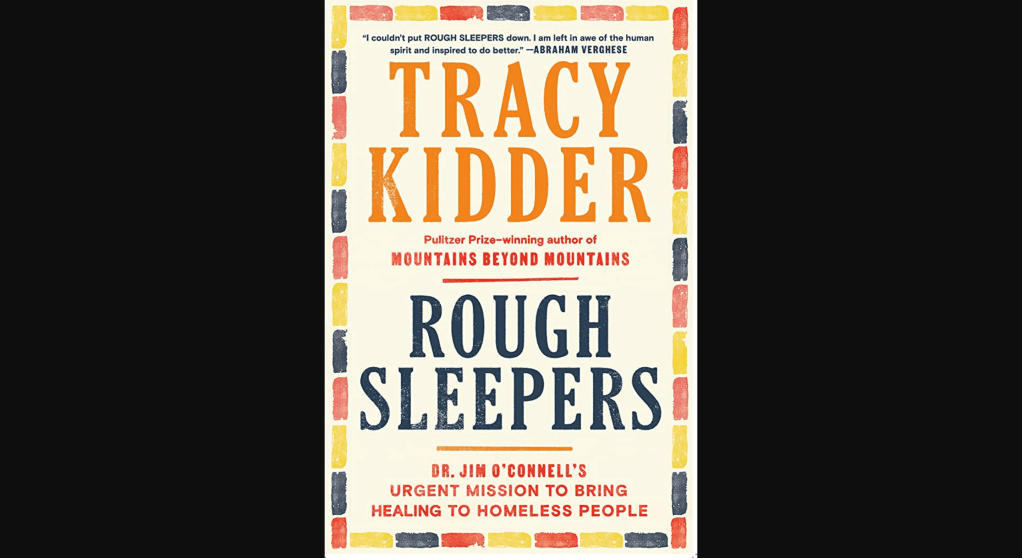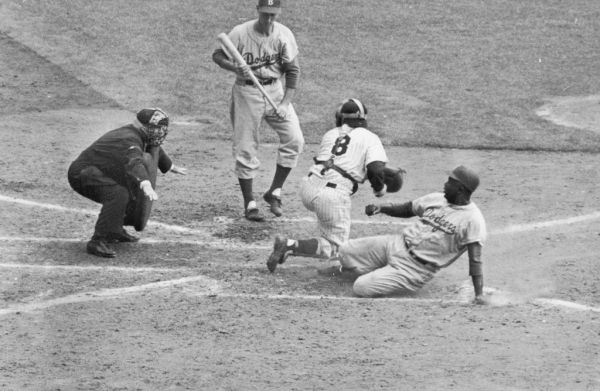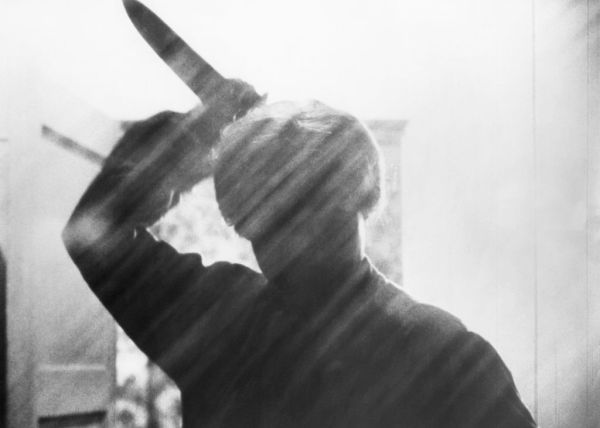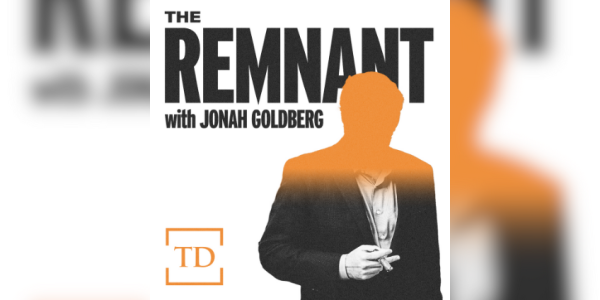“How are you?”
Those three words, inflected just so, are how James Joseph O’Connell, MD, always greets his clients, Boston’s homeless—or as he calls them, borrowing a 19th century British term, “rough sleepers.”
In our cynical times, it’s easy to assume that this greeting is mere technique, an Oprah-ism. But as one learns more about “Dr. Jim” from Tracy Kidder’s new book, Rough Sleepers: Dr. Jim O’Connell’s Urgent Mission to Bring Healing to Homeless People, a more ingenuous explanation emerges.
He really means it. He really cares. He really wants to know how the other person is, regardless of, or perhaps because of, how unkempt, unbathed, or unsober, that other person—with the emphasis on “person”—might be.
A key challenge for Rough Sleepers is that this seeming too-good-be-true-ness of Dr. Jim and his associates at the Boston Healthcare for the Homeless Program (BHCHP) could easily have become cloying. Kidder overcomes it by employing the M.O. he famously used in his previous books (e.g., The Soul of a New Machine, House, Hometown): he spends a lot of time with a lot of people. As a result, the innate goodness that might seem hard to swallow becomes impossible to deny.
Kidder spent parts of five years tagging along with Dr. Jim, a philosophy major at Notre Dame who did graduate work at Cambridge, then took a circuitous path that included tending bar in Vermont and coaching high school basketball in Hawaii before graduating from Harvard Medical School and doing his residency at Massachusetts General Hospital.
O’Connell was lined up with a fellowship in oncology from Memorial Sloan Kettering Cancer Center in New York when higher-ups at Mass General asked him to defer the fellowship for a year to help get the BHCHP off the ground. He was politically astute enough to say yes.
That was in 1985, and he’s still at it.
It had begun with a handful of people—the Dr. Jim-led “Street Team”—prowling around Boston in a van, dispensing blankets, hot soup, sandwiches, and basic medical care, then steering clients to one of the program’s three hospital clinics or 14 shelters. If possible, that is; rough sleepers aren’t always willing recipients of such care.
Today O’Connell is president of a BHCHP with a staff of over 600 medical and behavioral health professionals serving almost 10,000 people each year at more than 30 hospital- or shelter-based clinics.
While these statistics describe the scope of what O’Connell and his associates have built, they don’t say much about its soul. The mini-portraits that Kidder paints tell that story.
There was Dr. Jim’s first day on the job at BHCHP, when his assignment took him from the glass and stainless-steel citadel that is Mass General to the Pine Street Inn, Boston’s largest homeless shelter, just a few train stops from Mass General.
Upon his arrival at Pine Street, a nurse greeted him: “You have to let us retrain you. If you come in with your doctor questions, you won’t learn anything.” Then, a few moments later: “You’re going to soak feet.” Which was pretty much all the doctoring he did for more than a month, three afternoons and three evenings each week. It’s hard to miss the biblical connotation. And it put him physically beneath the patient, an important cue to gain the trust of the guests at Pine Street.
Those lessons paid off. One evening years later, the Street Team was cruising through a South Boston neighborhood and passed a loading dock on which appeared to be a pile of gray blankets. Dr. Jim got out of the van, climbed onto the dock, “and knelt by the gray mound. ‘Hey, Johnny. It’s Jim O’Connell. I haven’t seen you in a long time. I just want to make sure you’re all right.’
“An earthquake in the blanket, then an eruption: Tangled hair and a bright red face and a loud voice, saying in a Boston accent, ‘Doctah Jim! How the f*** are ya!’”
Barbara McInnis had been Dr. Jim’s nurse and teacher on that first day at Pine Street. She became an invaluable member of his team, dispensing medical services, wisdom, and caring in whatever dosages were needed until her death in 2003, when a minor car accident had led to a hospital stay and a lethal interaction between anesthesia and a diabetes medication.
A maxim McInnis offered her BHCHP colleagues: “You just have to be there and be present and, if need be, stand with them in the darkness.” But such spirituality was also solidly grounded in reality. As O’Connell mused to Kidder about what he regularly referred to as the Sisyphean nature of the challenge they faced: “The older I get, the more I realize how wise she was. I remember somebody coming into the clinic, and saying to Barbara, who was working like hell, ‘What are we going to do to fix this problem of homelessness?’ And she looked up and said, ‘Are you kidding me? I’m too busy. Don’t ask me a question like that.’ That was her way of saying, ‘Stop torturing me with what society isn’t about to do. Let’s just do the best we can right now and take care of these folks.’
“…But do I want to hold that up as a gold standard? No. I want to hold it up as, ‘This is what we do while we’re waiting for the world to change.’”
As inspiring as O’Connell, McInnis, and their colleagues might be, the stories of the rough sleepers are, well, rough.
“There’s the visual irony of Newbury Street, with its art galleries, boutiques, and cafés, where at night the usual people sleep in cardboard boxes and under the gray government-surplus blankets that the van distributes. The sleepers are variously positioned—inside the Gothic doorway of the Church of the Covenant, and on the pavement beside the windows of the public radio station, and under the display windows of Brooks Brothers clothiers.”
There was the masochistic entrepreneur who set up shop outside Fenway Park before Red Sox games, carrying a sign that read: “For one dollar you can hit me as hard as you want in the stomach. For five dollars as hard as you want in the face.”
Or the man who had lost both legs to neurological and vascular conditions, no doubt exacerbated by a superhuman tolerance for vodka that had earned him a perverse level of respect on the streets.
Then there was “Tony,” the BHCHP client whose story Kidder tells in the greatest depth, a synecdoche for rough sleepers in general.
After serving an 18-year prison sentence for sexual assault, Tony found himself on the streets, tagged as a Level 3 sex offender, a status that made it virtually impossible to get a job or qualify for housing assistance. Since two reliable predicates of the ability to escape life on the streets are access to housing and financial self-sufficiency, his situation was either a catch-22 or, if you prefer a darker view, Kafkaesque.
Tony was a big man, tall and very strong. O’Connell thought he might have played for the Patriots had life dealt him a better hand. While in prison, Tony served as the protector of vulnerable inmates. On the streets, he did the same for rough sleepers, as was the case during his intermittent stays at BHCHP treatment facilities.
While resident in such facilities he was an informal social director, bringing people together as often as he could. He was also an insightful pair of eyes and ears for Dr. Jim to help identify which guests might need attention sooner rather than later.
And then he would be gone, AMA—Against Medical Advice—at which point the Street Team would be on alert, knowing his haunts, eventually tracking him down and urging him to return. Which he would do after a few weeks, perhaps with ribs caved in by a baseball bat, but invariably with this or that illegal substance in his system.
He would be readmitted to a BHCHP facility and resume his social director, peace-keeper, and eyes-and-ears roles, until he would once again be AMA. Such was the cadence of Tony’s life until he, too, died on the streets. A fentanyl overdose.
Kidder goes deeply into Tony’s life, describing a horrific childhood that seemed to have made his imprisonment and violent outbursts inevitable. We are left with an ineffably sad picture of a broken man trying to survive in a broken system.
The book loses some of its punch when it ventures into the socioeconomics of homelessness. There are discussions of the relative effectiveness of like programs in Los Angeles, Denver, and New York City; the role of gentrification in the homelessness crisis; how using the federally defined poverty level as a criterion for housing assistance is misaligned with the reality of the real estate market in Boston; and, of course, swipes at the Reagan administration.
It’s not that these things are irrelevant. It’s that they are huge topics, calling for book-length treatments in themselves. As such, they are necessarily incomplete, wrenching a story of the soul into, if not tendentiousness, then at least earth-bound matters open to debate. (These passages do comprise only a few of the book’s 280 pages, though, so the charge is just a misdemeanor.)
In 2018, O’Connell offered this bleak summary while speaking at the program’s key annual fund-raiser, the Medicine That Matters Gala: “I like to think of this problem of homelessness as a prism held up to society, and what we see refracted are the weaknesses in our health care system, our public health system, our housing system, but especially in our welfare system, our educational system, and our legal system—and our corrections system. If we’re going to fix this problem, we have to address the weaknesses of all those sectors.”
Sisyphean indeed. In the meantime, as Barbara McInnis was resolute in reminding O’Connell as he attended to patients: “You’re not God. Your job is to fix his broken ankle.” But while that may have been good advice in the moment, Kidder’s depressingly inspiring book makes clear that in a broader sense she was wrong. Dr. Jim was doing God’s work, as were McInnis and their BHCHP colleagues.






Please note that we at The Dispatch hold ourselves, our work, and our commenters to a higher standard than other places on the internet. We welcome comments that foster genuine debate or discussion—including comments critical of us or our work—but responses that include ad hominem attacks on fellow Dispatch members or are intended to stoke fear and anger may be moderated.
You are currently using a limited time guest pass and do not have access to commenting. Consider subscribing to join the conversation.
With your membership, you only have the ability to comment on The Morning Dispatch articles. Consider upgrading to join the conversation everywhere.